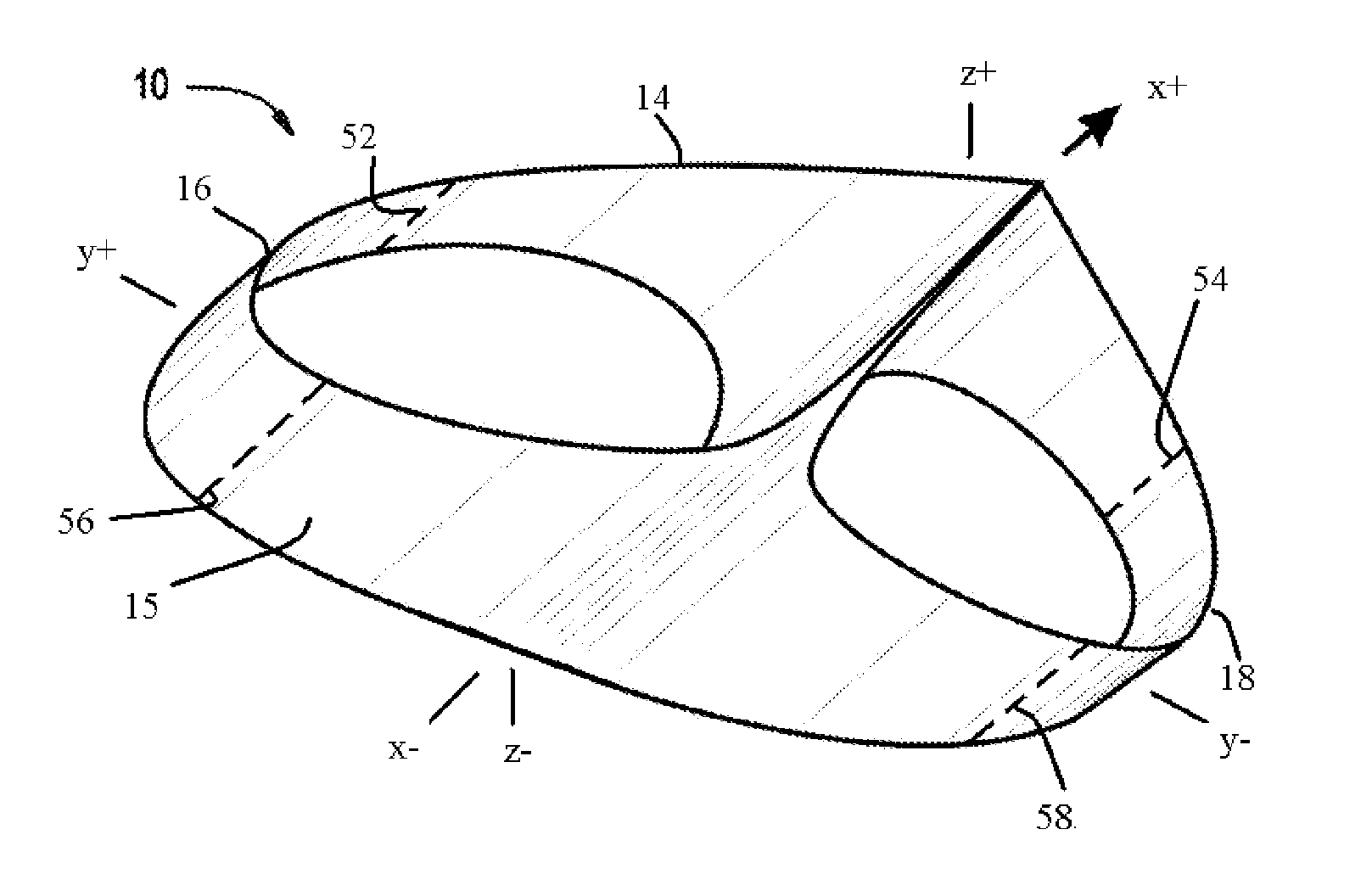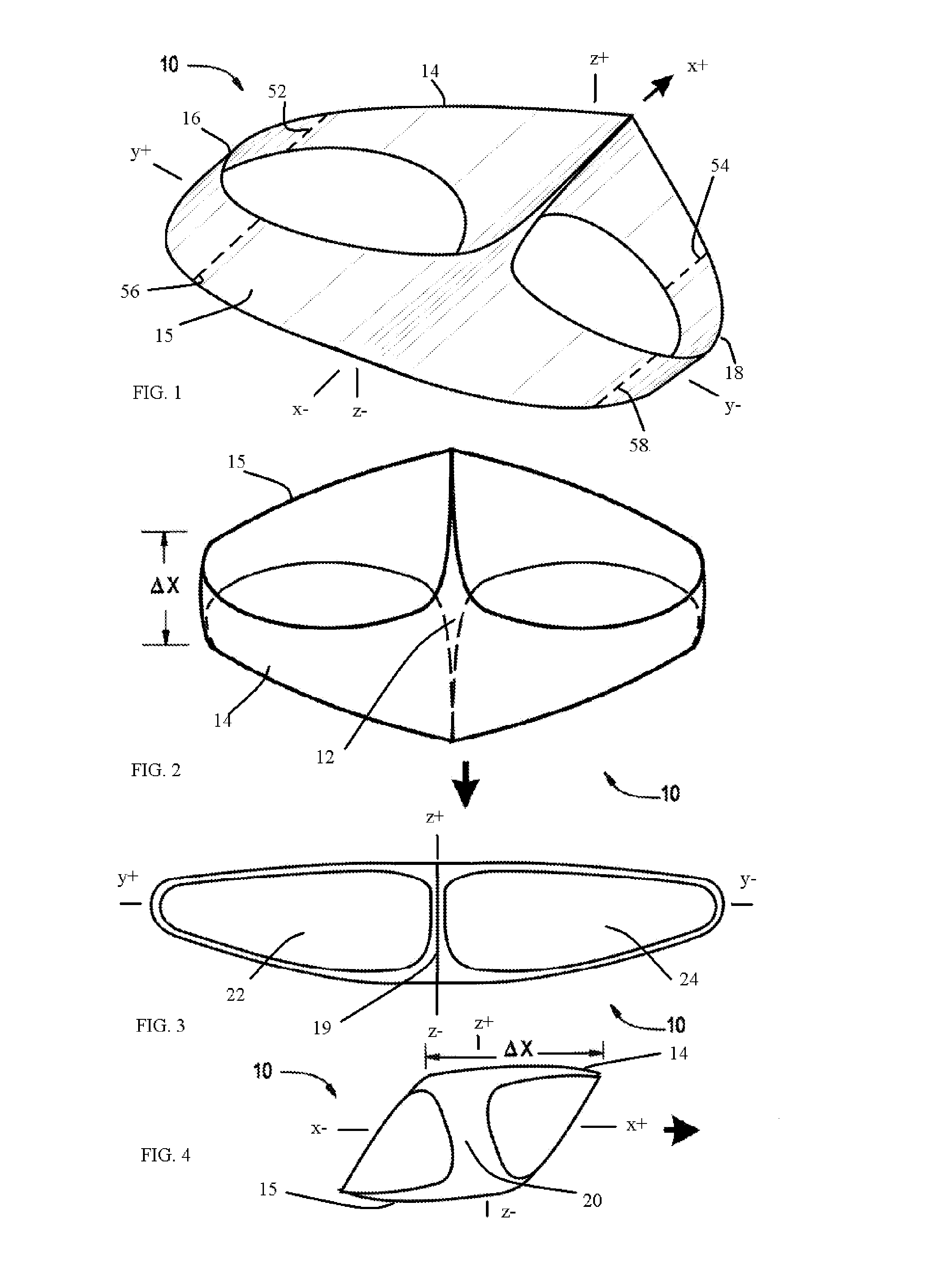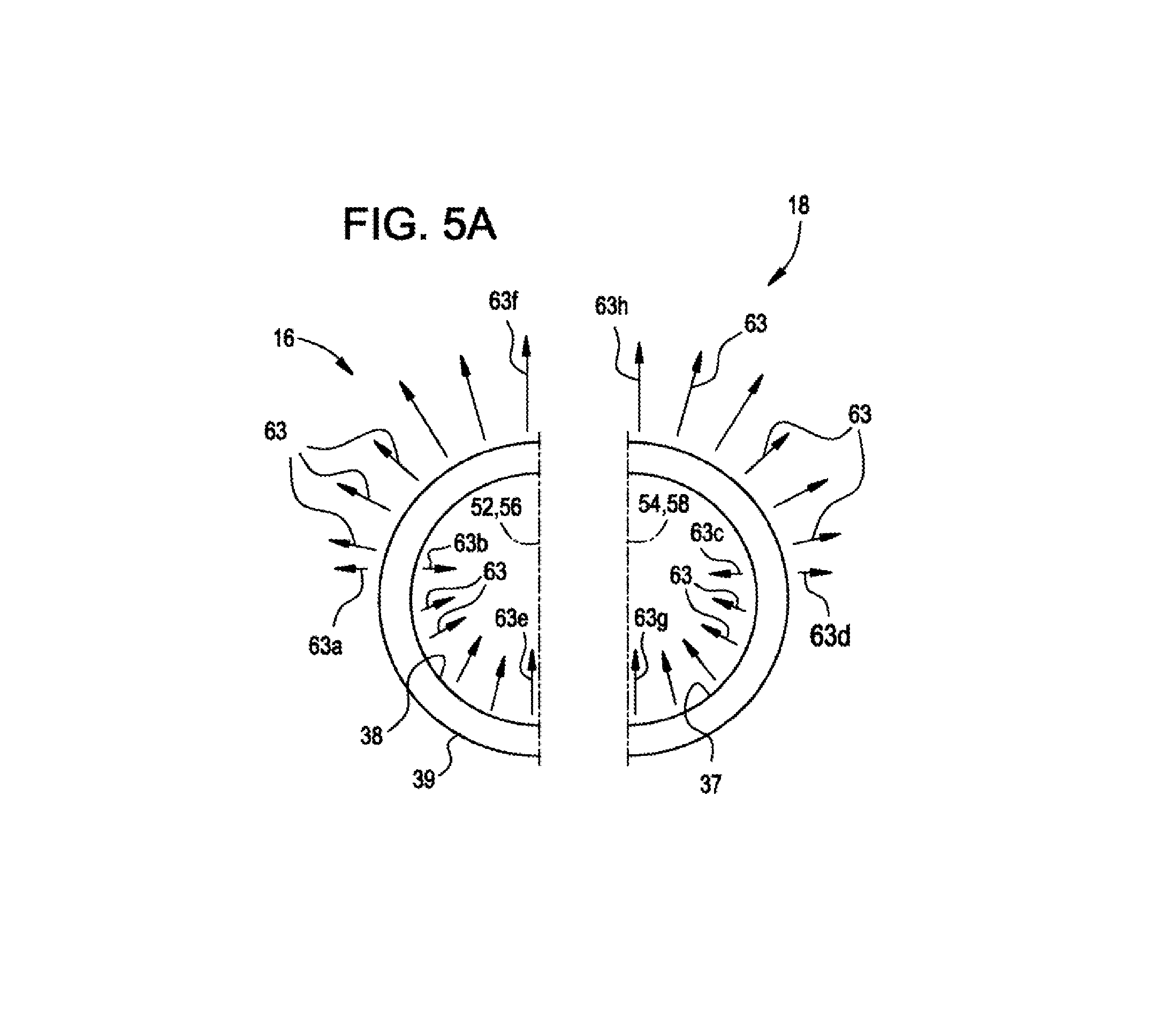Lifting foil
a foil and foil technology, applied in the field of fluid dynamics, can solve the problems of not being fully satisfactory, and achieve the effects of reducing a dynamic pressure, increasing the dynamic pressure, and reducing the generation of initial spanwise fluid flow
- Summary
- Abstract
- Description
- Claims
- Application Information
AI Technical Summary
Benefits of technology
Problems solved by technology
Method used
Image
Examples
Embodiment Construction
Nomenclature / Abbreviation
[0131]AP barometric pressure in mmHg[0132]AR aspect ratio[0133]a slope of lift curve[0134]acc acceleration[0135]a0 two dimensional lift-curve slope[0136]b length of semi-span[0137]CLU lift coefficient on the upper surface of a biplane[0138]C mean chord length[0139]CD coefficient of drag[0140]CDo drag coefficient at zero lift[0141]CL lift coefficient[0142]CLL lift coefficient on the lower wing of a biplane[0143]CLU lift coefficient on the upper wing of a biplane[0144]Cf skin friction coefficient[0145]Dend—plates plates endplates drag[0146]Dform form drag[0147]Di induced drag[0148]Dinterface interference drag[0149]Dparasite parasite drag[0150]Dskinfriction skin friction drag[0151]Dtotal total Drag force[0152]Dwings wing drag[0153]dP diameter of the particle[0154]di image diameter of the particle[0155]e span efficiency factor[0156]f″ number of lens[0157]g gap ratio to the chord[0158]h perpendicular distance[0159]L lift force[0160]L / D lift to drag ratio[0161]l t...
PUM
 Login to View More
Login to View More Abstract
Description
Claims
Application Information
 Login to View More
Login to View More - R&D
- Intellectual Property
- Life Sciences
- Materials
- Tech Scout
- Unparalleled Data Quality
- Higher Quality Content
- 60% Fewer Hallucinations
Browse by: Latest US Patents, China's latest patents, Technical Efficacy Thesaurus, Application Domain, Technology Topic, Popular Technical Reports.
© 2025 PatSnap. All rights reserved.Legal|Privacy policy|Modern Slavery Act Transparency Statement|Sitemap|About US| Contact US: help@patsnap.com



